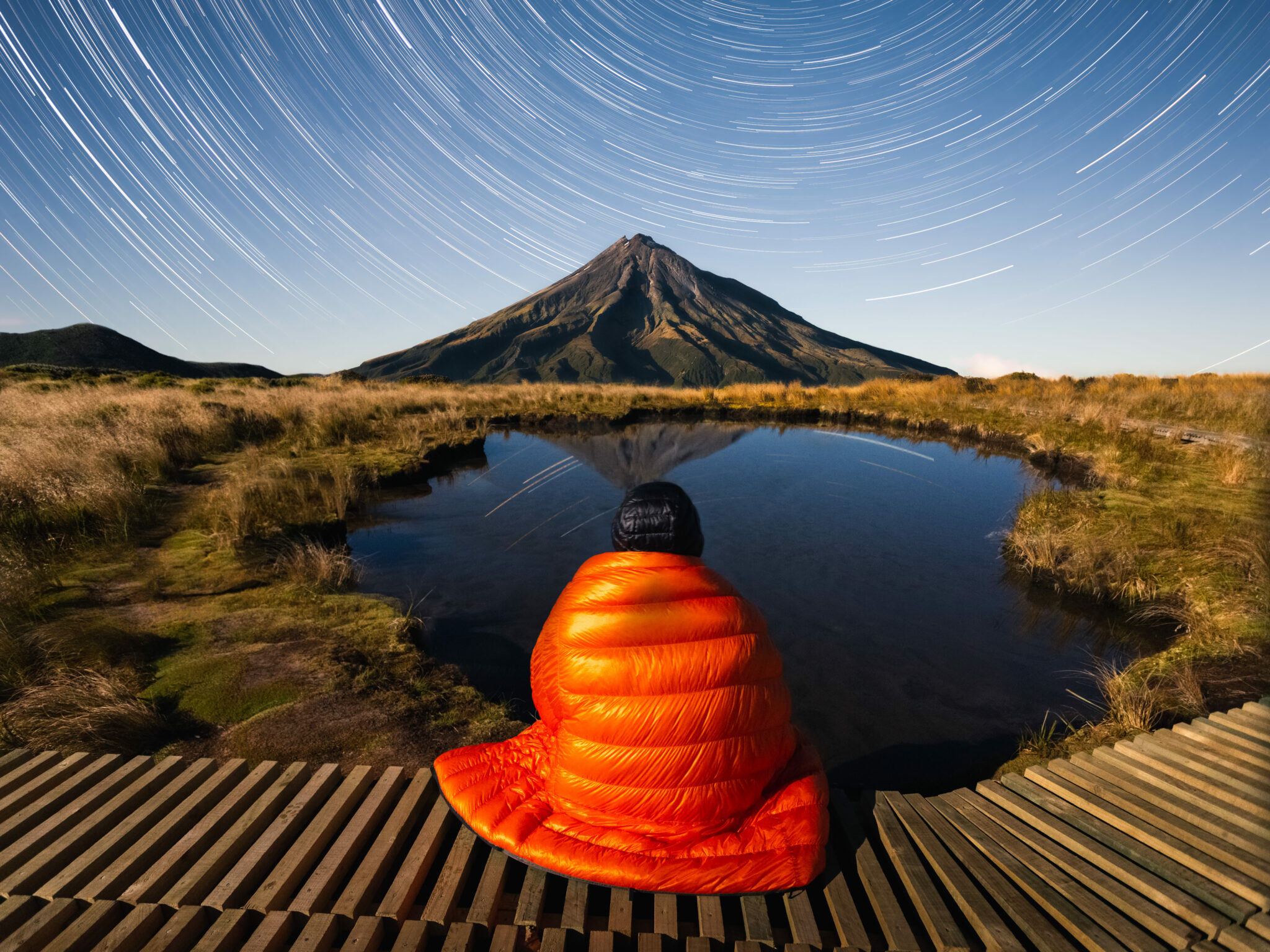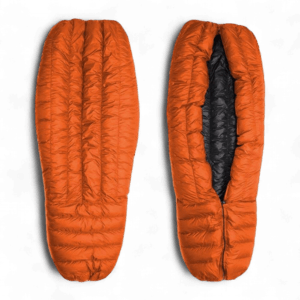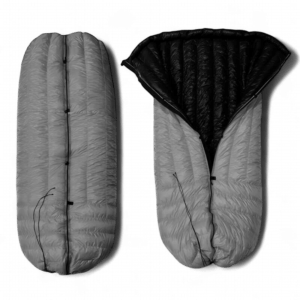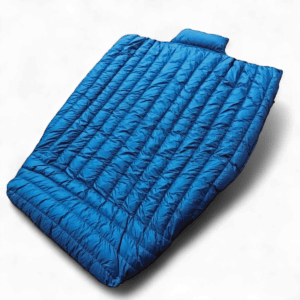What is a Down Sleeping Quilt?

An Introduction to Quilts: The Ultimate Guide for Outdoor Sleep Systems
For anyone transitioning from traditional sleeping bags or just starting their outdoor adventures, quilts might seem like a niche piece of gear. But as more backpackers, hikers, and campers discover their benefits, quilts are becoming a staple for outdoor sleep systems. Whether you’re chasing ultralight efficiency or looking for a more versatile setup, this guide will introduce you to the world of quilts and why they’re worth considering.
What Is a Quilt?
A quilt is a streamlined alternative to a sleeping bag designed to maximize warmth, reduce weight, and improve packability. Unlike sleeping bags, quilts forego zippers and insulation on the underside, relying instead on your sleeping pad to provide the bottom layer of insulation. The result? A lighter, more efficient sleep system that still delivers exceptional warmth and comfort.
Why Choose a Quilt?
- Lightweight and Compact
Quilts eliminate unnecessary bulk, like zippers and bottom insulation, which compresses under your body and doesn’t contribute to warmth. This design makes quilts lighter and more compact than sleeping bags, saving valuable weight and space in your pack. - Highly Versatile
Unlike the restrictive design of a sleeping bag, quilts offer freedom of movement. They’re great for side sleepers, back sleepers, or anyone who tosses and turns. Plus, they double as blankets for lounging around camp, making them a versatile addition to your gear lineup. - Efficient Warmth
Paired with the right sleeping pad, a quilt focuses its insulation on the areas that matter most—your top and sides—while the pad provides warmth underneath. This targeted design offers an excellent warmth-to-weight ratio, especially in three-season conditions. - Customizable Fit and Features
Many high-quality quilts, like those from UGQ Outdoor, include features such as:- Adjustable footboxes to keep your feet warm and cozy.
- Pad attachment systems to secure the quilt and prevent drafts.
- Dynamic Tension Control (DTC) for a snug, gap-free fit.
Key Components of a Quilt
- Footbox
The footbox is the closed section at the bottom of the quilt, designed to trap heat and keep your feet warm. Some quilts offer adjustable or zippered footboxes, providing flexibility for different conditions. - Insulation
Most quilts use high-quality down or synthetic insulation. Down, especially with a high fill power like 850+ or 950, offers superior warmth-to-weight performance and excellent packability. - Fabric
Quilts are made with lightweight, durable fabrics that balance breathability and weather resistance. For ultralight enthusiasts, materials like 10D or 20D nylon are popular choices. - Pad Attachment System
This system secures the quilt to your sleeping pad, preventing drafts and ensuring that the quilt stays in place as you sleep.
Who Should Use a Quilt?
- Backpackers and Thru-Hikers
For those who count every ounce, a quilt offers a significant weight savings compared to traditional sleeping bags. Its compact design also frees up space in your pack. - Hammock Campers
Quilts pair perfectly with hammocks, eliminating the struggle of zipping into a sleeping bag in a confined space. - Warm Weather Campers
In mild or warm conditions, quilts provide the perfect balance of comfort and ventilation without the risk of overheating. - Side Sleepers and Active Sleepers
If you move around a lot at night, a quilt’s open design offers the freedom to sleep in any position comfortably.
How to Choose the Right Quilt
- Temperature Rating
Select a quilt with a temperature rating suited to the conditions you’ll face. For three-season camping, a quilt rated 10°F lower than the expected low is a safe choice. - Insulation Type
Down insulation is the go-to for lightweight and compressible warmth, while synthetic insulation is more affordable and performs better in wet conditions. - Features and Customization
Look for adjustable footboxes, pad attachment systems, and additional features like UGQ Outdoor’s Dynamic Tension Control (DTC) to enhance comfort and performance.
Tips for Using a Quilt
- Pair with a High-R-Value Sleeping Pad: Since quilts rely on your pad for bottom insulation, choose one with an appropriate R-value for your conditions.
- Seal Out Drafts: Use the quilt’s pad attachment system and DTC to create a snug, draft-free setup.
- Dress in Layers: Lightweight base layers can help retain warmth and wick away moisture for added comfort.
- Vent When Needed: On warmer nights, loosen the footbox or leave the quilt untucked for better airflow.
Why UGQ Outdoor Quilts?
At UGQ Outdoor, we specialize in crafting premium quilts designed to meet the needs of every adventurer. Each quilt is made to order, offering customizable options for insulation, fabric, and features to ensure you get the perfect fit for your adventures.
Conclusion
Quilts are a game-changer for outdoor enthusiasts looking to lighten their load and enhance their comfort. Whether you’re a backpacker, hammock camper, or casual weekend adventurer, quilts provide a versatile, efficient, and cozy sleep system for any journey.
Customer Reviews
-
 Bandit Top Quilt$274.95 – $594.95
Bandit Top Quilt$274.95 – $594.95 -
 Outlaw Hybrid$369.95 – $724.95
Outlaw Hybrid$369.95 – $724.95 -
 Tango Duo$424.95 – $729.95
Tango Duo$424.95 – $729.95



